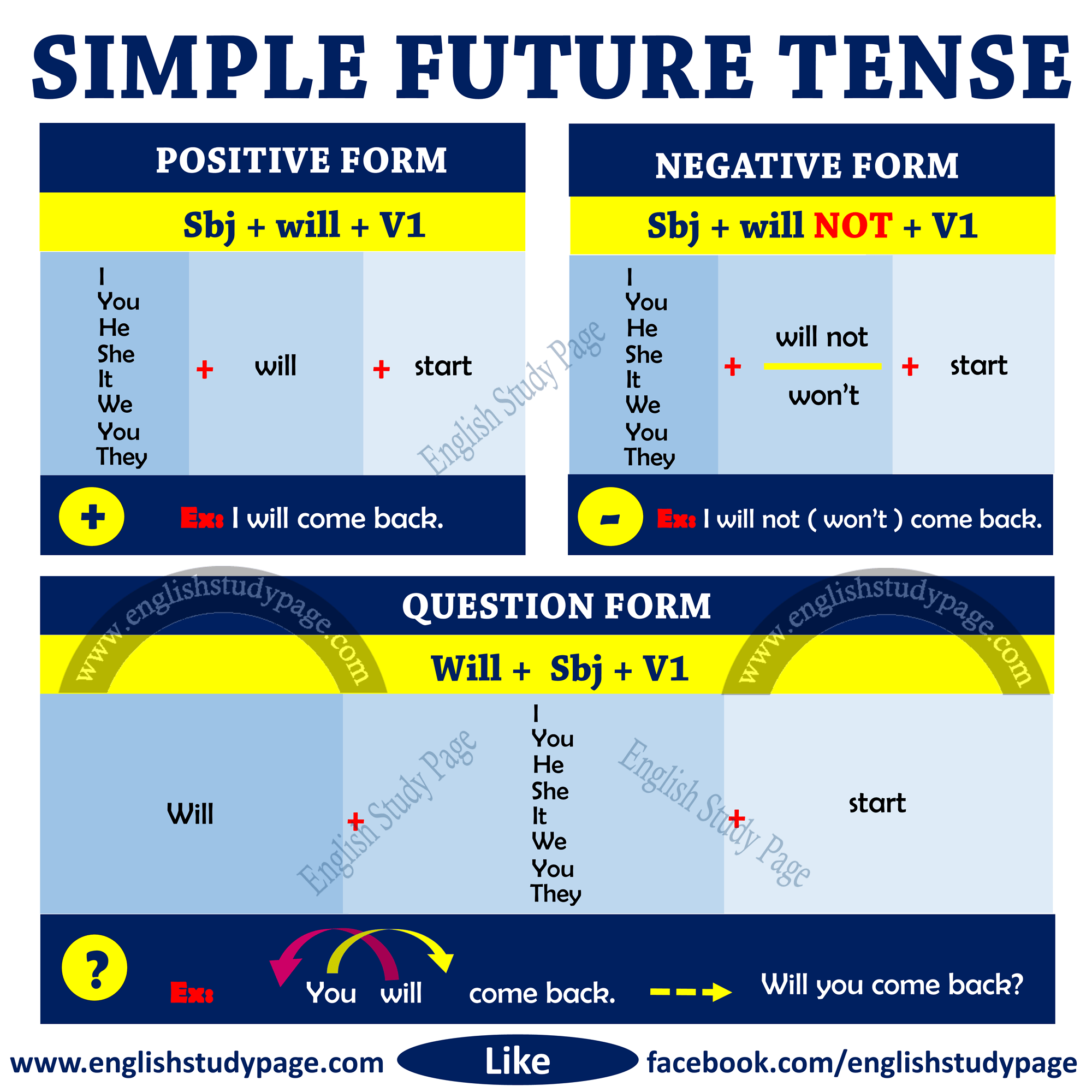Future simple tense
The Future Simple tense is often called the "will tense" because we make the Future Simple with the modal auxiliary will.
How do we make the Future Simple tense?
The structure of the Future Simple tense is:
How do we make the Future Simple tense?
The structure of the Future Simple tense is:
For negative sentences in the Future Simple tense, we insert not between the auxiliary verb and main verb. For question sentences, we exchange the subject and auxiliary verb.
How do we use the Future Simple tense?
No Plan
We use the Future Simple tense when there is no plan or decision to do something before we speak. We make the decision spontaneously at the time of speaking. Look at these examples:
- Hold on. I'll get a pen.
- We will see what we can do to help you.
- Maybe we'll stay in and watch television tonight.
Prediction
We often use the Future Simple tense to make a prediction about the future. Again, there is no firm plan. We are saying what we think will happen. Here are some examples:
- It will rain tomorrow.
- People won't go to Jupiter before the 22nd century.
- Who do you think will get the job?
Be
When the main verb is be, we can use the Future Simple tense even if we have a firm plan or decision before speaking. Examples:
- I'll be in London tomorrow.
- I'm going shopping. I won't be very long.
- Will you be at work tomorrow?
Now, you are ready to develop the next activity.
Access the link and complete the activities that will be presented on the use of the future simple.

No hay comentarios:
Publicar un comentario